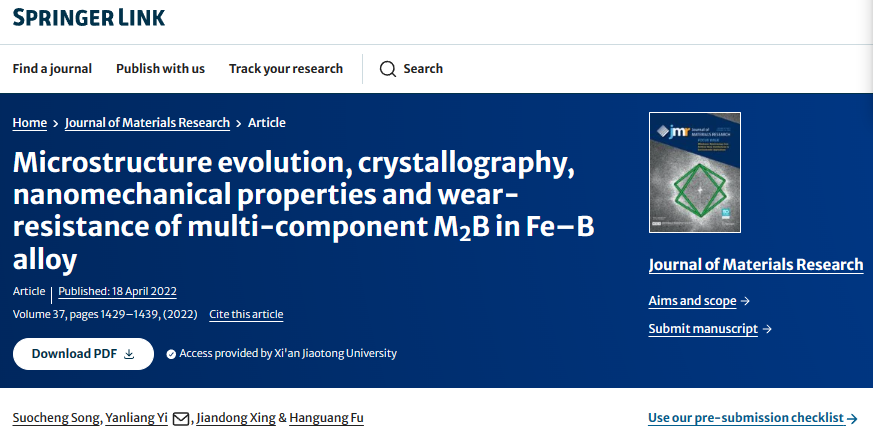
To investigate the basic characteristics of multi-component boride in Fe–B alloy, the samples were prepared by directional solidification, and then the microstructural evolution, crystallography, nanomechanical properties and wear-resistance of multi-component M2B have been systematically studied. The results show that the boride grows in the sequence of Mo-rich → Fe-rich → Cr-rich M2B. The Mo-rich M2B has the body centered tetragonal (bct) structure with stoichiometry of Fe0.72Cr0.27Mo0.80(B,C), the Fe-rich M2B possesses the bct structure with stoichiometry of Fe1.59Cr0.38Mo0.08(B,C), while the Cr-rich M2B owns the body centered orthorhombic (bco) structure with stoichiometry of Fe1.48Cr0.50Mo0.02(B,C). Moreover, the Mo addition can facilitate more dislocations in the M2B compared to the Cr addition. Thus, the Mo-rich M2B has the best stiffness and toughness, followed by the Cr-rich M2B and then the Fe-rich M2B. Additionally, the Mo-rich and Cr-rich M2B can possess higher wear-resistance relative to the Fe-rich M2B.
Link:https://link.springer.com/article/10.1557/s43578-022-00543-z